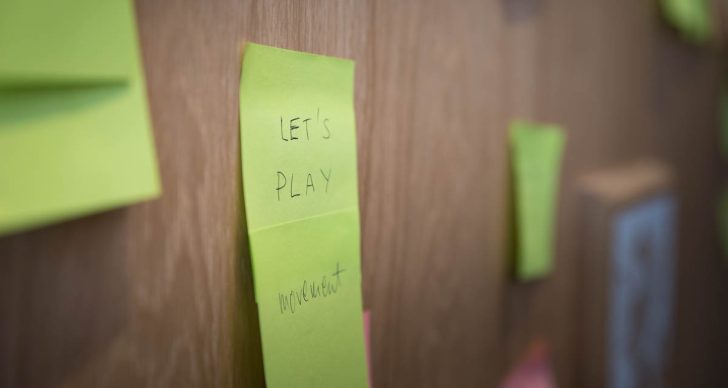Many [students] are unaware of their own thinking processes. [Fewer still] are aware of their own thinking processes while they are thinking. When asked, “How are you solving that problem?” They may reply, “I don’t know. I’m just doing it…” They can’t describe the steps and sequences they use before, during and after problem-solving.’ Costa [i] (1991)
I recently celebrated (rather quietly) 25 years in international education – both as a practitioner and as an observer. In that time, I have had the privilege of working in, and with, some outstanding schools and have witnessed some inspirational classroom practice, particularly in the field of curriculum development and school community mobilisation.
However, one area about which I can make fewer claims is the extent to which my colleagues and I deliberately sought to develop students’ capacity to think about their thinking – something that is more formally referred to as ‘metacognition’. As I reflect upon those 25+ years, I can point to very little evidence of ‘metacognitive talk’ in the classroom or examples where we explicitly developed metacognitive strategies with our students.
I’m not entirely sure why this was the case: I expect the problem lay partly in the fact that it never used to come up in initial teacher training. However, it is more to the point that, even in later years, we were never exposed to the kind of professional development that revealed the potential impact on students’ overall achievement, when they begin to ‘think about their thinking.’
This post then is an attempt to rectify that. It will start with a brief discussion of what metacognition is, and then continue by focussing on one particular strategy you might want to use in your schools to foster metacognitive practice.
The word metacognition is, of course, a compound of ‘meta’, from the Greek word about, and ‘cognition’, which refers to the process of acquiring knowledge and understanding through thought. Hence the rather simple definition – “thinking about one’s thinking” – referred to above.
Whilst this might be acceptable short-hand initially, further insight is required to get to the heart of this complex concept.
According to Baker and Brown [ii] (1984), metacognition involves two basic constructs:
1) A student’s awareness of the processes s/he needs to successfully complete a task (solve a problem, for example).
2) A student’s cognitive monitoring – the ability to determine if the task is being completed correctly and to make changes along the way if not.
Fusco and Fountain [iii] (1992) have contributed further by explaining that metacognition also involves the monitoring and control of attitudes. These could include the following: the student’s beliefs about themselves; the value of persistence; the nature of work; and their personal responsibility in accomplishing a goal.
Therefore, perhaps Ridley et al [iv] (1992) should have the final say in terms of a definition when they state that, “metacognitive skills include taking conscious control of learning, planning and selecting strategies, monitoring the progress of learning, correcting errors, analysing the effectiveness of learning strategies, and changing learning behaviours when necessary.”
So, how do we encourage the development of these skills in our students?
Well, the good news is that metacognitive strategies can be taught and developed in all learners. And even better, at least for school leadership, is that it doesn’t take a large slice of your professional development budget to do so. The key is to shift the culture of the classroom to one that places greater emphasis on learning and establishes a climate that is conducive to teaching for thinking and understanding – what Watkins[v] (2010) refers to as making learning ‘an object of attention’, as well as ‘an object for conversation’.
There are many ways to do this, however I would like to draw the your attention to one strategy in particular.
Writing in 1982, Biggs and Collis [vi] developed what they refer to as the SOLO Taxonomy. This starts from the basic premise that as learning progresses it becomes more complex and that it is useful to have a framework to understand the level of complexity. As Biggs himself explains, “the Structure of the Observed Learning Outcome (SOLO) enables students to evaluate their work in terms of its quality, not in terms of how many bits of this and of that they got right. At first we pick up only one or few aspects of the task (Unistructural), then several aspects but they are unrelated (Multistructural), then we learn how to integrate them into a whole (Relational), and finally, we are able to generalise that whole to, as yet, untaught applications (Extended Abstract).”
The following image, taken from HookED, represents the taxonomy graphically and includes examples of command terms the student might expect to have mastered at each level for a given topic, idea, concept, etc.
What is important is that students determine and articulate where they are on the taxonomy for themselves, and then work out what they need to do in order to progress further.
Watch the video below to briefly hear how two primary school students in New Zealand use the SOLO taxonomy in their thinking.
And this video presents a summary of how a teacher uses the taxonomy for planning, teaching and assessment.
In summary, research literature around effective classroom practice tells us that powerful learning comes from cognitive experiences. It also tells us that good teachers develop lessons and schemes of work that emphasise specific types of thinking to improve student learning, e.g. drawing inferences, synthesis, hypothesising, analytical reasoning, inquiry, interpretation, etc. Alongside this must be the view that students can increasingly become aware of this thinking and monitor and regulate it – that metacognition becomes a central part of the learning process as well.
I encourage you all to consider this in your own contexts and learn more about how developing metacognition in your students can lead to a marked and sustained improvement in their achievement.
[i] Costa A L (1991) The school as a home for the mind: A collection of articles. Palatine, IL. IRI/21 Skyline Publishing.
[ii] Baker L and Brown A (1984) Metacognitive skills and reading. In P.D. Pearson (Ed), The Handbook of Reading Research (pp 353-394). New York, Longman.
[iii] Fusco E and Fountain G (1992). Reflective teacher, Reflective learner. In A.L. Costa, JA Bellanca, and R Fogarty (Eds), If minds matter: a foreword to the future, Volume 1 (pp 239-255). Palantine, IL. IRI/21 Skyline Publishing.
[iv] Ridley DS, Schutz PA, Glanz RS, and Weinstein CE (1992). Self-regulated Learning: The Interactive Influence of Metacognitive Awareness and Goal-Setting. Journal of Experimental Education, 60 (4), 293-306.
[v] Watkins C (2010).Learning, Performance and Improvement. In J Reed (Ed) INSI Research Matters No. 34. International Network for School Improvement. Institute of Education, London.
[vi] Biggs J and Collis K (1982) Evaluating the Quality of Learning: the SOLO taxonomy New York: Academic Press.






